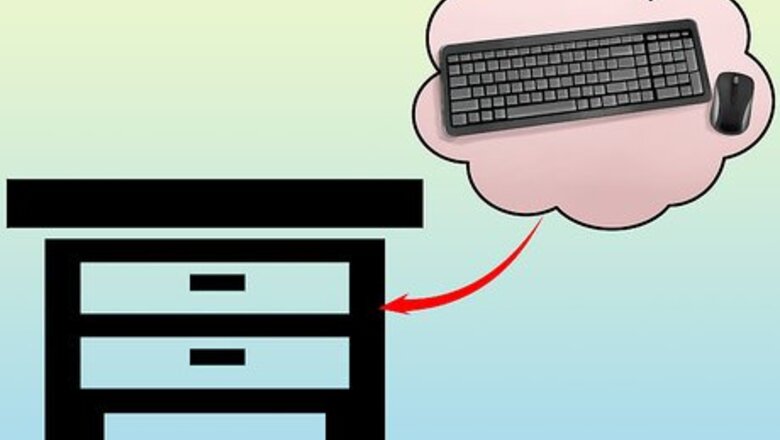
views
Blocking Access to the Keyboard
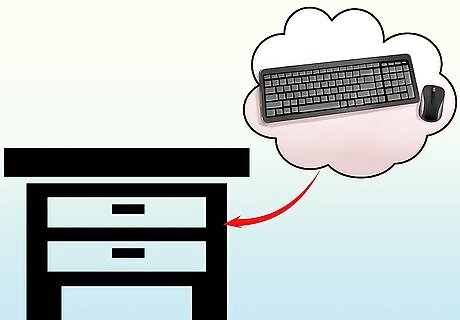
Do not leave your cat unattended around your keyboard. When you leave your computer terminal, for whatever reason and length of time, put the keyboard out of reach. Should your cat's curiosity cause it to investigate, it won't be able to pad across the keys and leave gibberish for your email buddies. Train yourself to put the keyboard away regularly so that it becomes a habit each time you move away from the desk. Wireless keyboards can be placed in a drawer, turned off, or put well away from the computer. Attached keyboards can be hung on the monitor, pushed to one side, or hidden underneath something, such as a keyboard cover. If you can lock your keyboard, this is another alternative, so that any pressure placed on the keys does not result in text being typed into any program.
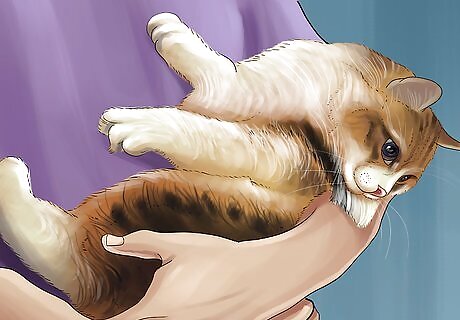
Watch your cat. Be alert to the cat's interest in the keyboard so that you can spot any readiness to spring and pounce. This provides you with the opportunity to move the keyboard, should the cat act quickly. Another option is to move the cat, if it appears to be hovering too closely. You could also use this opportunity to adopt your authoritative tone of voice to tell it: "No! You are not going to sit on my keyboard."

Block the cat from getting into the keyboard area. Consider creating a barricade that either stops your cat from getting into your desk area or prevents it from reaching the keyboard zone. The purpose of a barricade is to present a hurdle that the cat considers not worth the challenge. The utility or feasibility of doing this depends totally on the type of work space you have and your work style. Alternatively, a barrier may be used to prevent the cat from seeing the keyboard and your finger movements, thereby removing the stimulus for investigation. For example, you can place piles of books on either side of your keyboard area. This can work well if you have a lot of desk space.

Shut the door to your room to keep your cat out. One particularly good way to keep your cat off of your keyboard is to block its access to the room you are working in. Obviously, this depends on where your computer is located. If it's an open space, you won't be able to do this. However, if you have a discrete study and there's a door that can be closed, consider the ultimate barrier of shutting it on the other side. However, this method may cause your cat to become unhappy. It may meow or scratch at the door to try and get in.
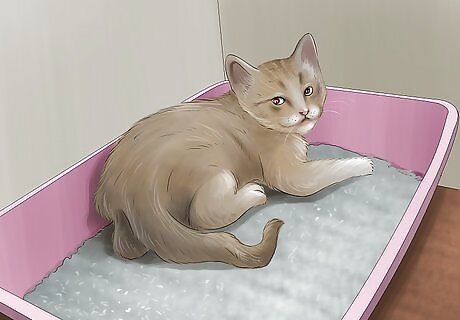
Put your cat in its own room for a limited amount of time. Try putting your cat in its own room when you really need to get work done uninterrupted. For example, put your cat in the bathroom with its bed, food and water, litter box, and toys for an hour or so. Then, when the work it done, let your out and spend some quality together. You should not keep your cat locked up alone all the time. While it doesn't hurt to keep it contained for awhile, this should not be an all day, every day solution. For really active cats that don't get the message, getting locked inside a cat carrier or crate, facing you, can work for a time. How successful this will be depends on how much meowing results from locking it away. However, be sure that the cat can see you and seems comfortable.
Making the Keyboard an Undesirable Place

Consider purchasing a computer stand. When the computer is at an angle, your cat won't be able to sit on it. This trick works instantly and involves no negative reinforcement. In addition, a computer stand is ergonomic and helps to cool your computer.
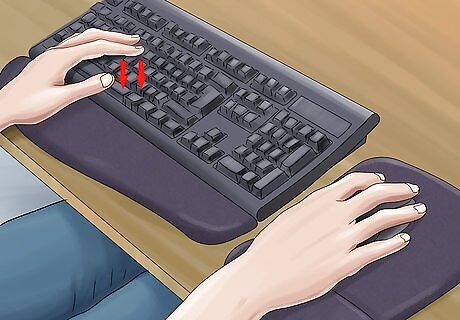
Make jerky arm movements while typing. This could be a quirky form of exercise for you if you're glued to the keyboard, but it might also work to deter the cat. As you type, move your elbows up and down whenever the cat threatens to come near. The constant movement of your arms might make it feel uncomfortable and cause it to hop down and do something else for a while. On the other hand, a patient cat might just wait it out until your arms tire, which won't be long if you've got to get on with typing; and a more playful cat might take it as an invitation to play.

Don't encourage your cat by showing it things on your computer screen. As tempting as it may be to show kitty the latest cat video you think is just hilarious, don't do it. This will tell the cat that it's okay to hang around your workspace. Once you invite the cat into your keyboard space, it will assume that it's okay to be there.

Avoid giving positive reinforcement. You should not make it a positive experience when your cat jumps up on your keyboard. Don't pet it or praise it in any way. Making the experience on the keyboard as boring or negative as possible will make the cat less interested in jumping up there.

Fill a jar or can with coins to make a noisy rattle. A cat can typically be scared off a keyboard by a loud sound. An empty beer or soda can works well for this purpose. Put coins in the jar and then seal the top with duct tape or screw on the lid if the container has one. Shake this container whenever the cat tries to get near the keyboard. Be aware you will need to make the noise fairly loud and annoying, otherwise the cat may think it's an invitation to play or a food rattle. As with the water squirt, it won't be long before your cat is habituated to staying away.

Make the surface unappealing. Make the surface around the keyboard sticky to the touch to keep your cat away. Place duct tape, sticky side up, around your work space area, either attached outwards on the barriers you've created or even laid flat on the desk. Cats don't like getting sticky paw pads, so it'll put it off trying to get any nearer. Try covering several cheap place mats or pieces of cardboard with double-sided tape and placing them on either side of the keyboard. You can place them out when you need to keep your cat away, but they don't have to be on the desk all of the time. Naturally, this method can get quite messy as all your pens, pencils, papers and even you get caught by the sticky tape too! You can also try materials such as aluminum foil or the underside of a plastic office chair mat. Look for things that are safe but unappealing for your cat.
Distracting Your Cat From Your Keyboard
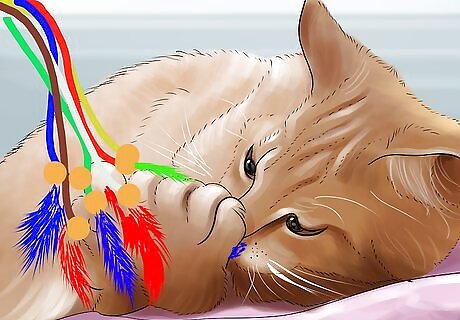
Provide your cat with toys. The time-honored tradition of distraction is probably one of your best offensive tactics. Keep a basket of cat toys near the desk for your cat to play with. You could even set up a kitty condo or play area near your computer so that it's near you and you can keep an eye on it as it plays. Rotate toys for added interest. Keep the cat's interest by only putting out one or two toys at a time. Try tying a string to your office door handle to provide your cat with the opportunity to bat it around. You can also try battery-operated toys. These can be particularly helpful if you need to focus on work but your cat likes a lot of play time.
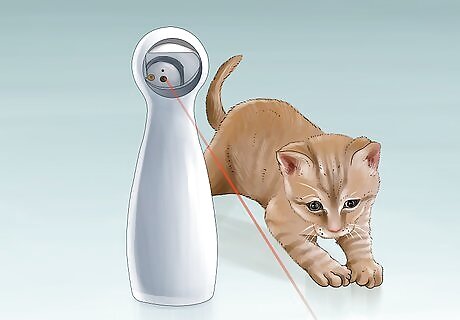
Distract the cat with a laser pointer. Every time your cat threatens to jump up on your workspace, grab the pointer and start playing laser tag across the floor. You can lead your cat away from your work area and into the ecstasy of play. There are even some automated laser toys that will occupy your cat without you needing to be an active participant.
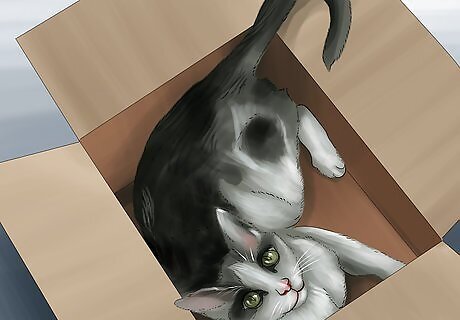
Create a comfort zone for your cat near the workspace. Set up a comfy space for your cat that is near your but not right next to your keyboard. Very often your cat just wants to be near you while you work or play on the computer. Indeed, the longer you're stuck there, the more it wants your attention and will be likely to put itself right in your face to get it. By placing a bed or comfy sleep spot near you as you work or play on the computer, your cat may be satisfied enough that it can see you to avoid feeling the need to attack your keyboard. If you have a laptop, your cat may like the warmth of the device. Try using a heated bed to keep them warm and off the keys. The comfort zone may not work with a kitten. Kittens think that everything is an invitation to play and that sleep just gets in the way. All the same, the earlier you can train your kitten to like sleeping near your workspace rather than pawing all over it, the better.
Using Alternative Strategies
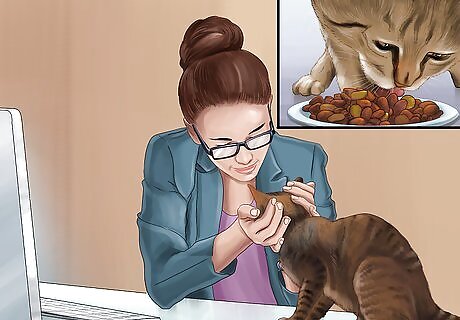
Train your cat not to walk on your keyboard. While not all cats will respond to training, some will get the hang of commands if they are taught them from a young age. Use a soft but firm voice that means business, using such words as "No!" and "Get down" whenever the cat does something you don't want it to be doing. With the right tone of voice, it'll know very well that it is not permitted to persist. In some cases, repeatedly removing the cat from your desk gently may work after a few rounds. It'll get the message that every single time you will put it straight down on the ground again. Some cats may take direction, but many do not respond well to commands. Try to use a reward-based training system, as your cat will likely respond better to this.

Give your cat an area to lay in front of you or on your lap. If you work at a desk, you may be able to clear the space in front of your screen to give your cat a place to walk and lay. With the right configuration, you may be able to get your work done and allow your cat access to your desk or your lap. Try installing a keyboard shelf under the desk, which will allow you to keep typing on your keyboard while your cat walks around.

Use keyboard leaps as a reason to take a break. If you're the kind of person who falls into your computer and forgets how much time has passed, your cat's keyboard antics might well be a blessing in disguise. Perhaps it is letting you know that you've done enough work or gaming for now and it's time to do something else. Heed your cat's message and go play for a bit. You need the break and your cat deserves the attention.










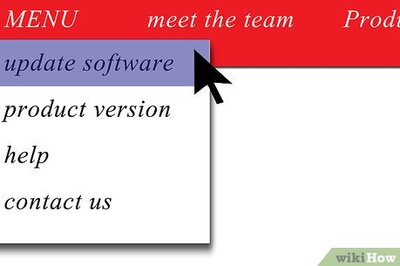






Comments
0 comment